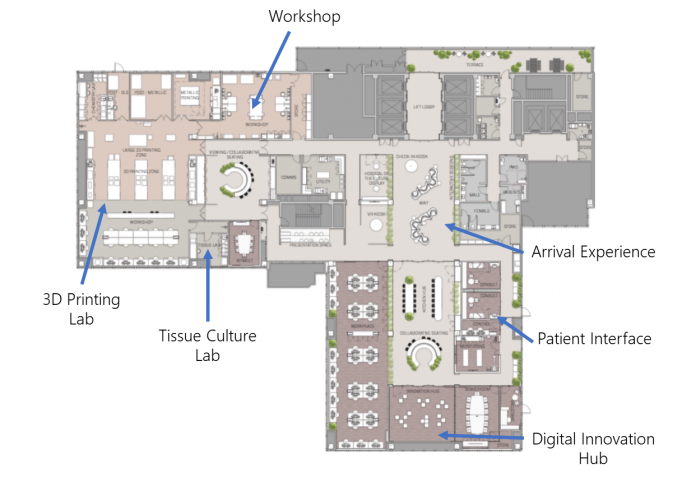
Queensland Health Minister Yvette D’Ath officially opened an innovative new facility at the Herston Health Precinct in Brisbane that will bring together clinicians, academics and industry leaders to advance knowledge and technology in 3D printing, scanning and modelling of medical devices and tissues such as bone.
Located on the grounds of Royal Brisbane and Women’s Hospital (RBWH), the Herston Biofabrication Institute (HBI) will combine engineering and medical expertise to develop new medical devices and new ways of working for a number of key areas including orthopaedic surgery, burns and dermatology, vascular surgery, urology, cancer care, neurosurgery, craniofacial surgery and anaesthesia and intensive care.
The $10 million facility, which was funded by Metro North Hospital and Health Service with a $5 million donation from RBWH Foundation, includes a full mechanical workshop, a number of 3D printers in the printing lab, a digital innovation hub, a tissue culture laboratory and patient consultation rooms.
HBI Clinical Director Dr Michael Wagels said the team hopes to have integrated Biofabrication technologies seamlessly into everyday patient care within 10 years.
“Chronic disease, trauma, cancer or any other misfortune may cause loss of part of a patient’s body. Modern medicine is capable of remarkable things to overcome these losses but usually at some cost; whether the travails of immunosuppression therapy after organ transplantation, the omnipresent risk of implant failure or the functional limitations imposed by a reconstruction,” Mr Wagels continued.
“But imagine if we could replace the part that was missing or defective with something that fits perfectly and has been created from their own tissues with nothing more than a small sample? This is what we are working towards here at HBI.
“Realising that dream will take a long time, but to get there, we are looking at everything in the biofabrication space from bioactive 3D printed implants to 3D bioprinting for skin regeneration in burns patients.
“In addition, this new facility will assist with anatomical surgical planning through 3D scanning and printing. We are also looking at new ways of teaching modern, highly sophisticated skills to ensure that our clinicians of the future are well-prepared.”
HBI, which boasts a 30+ person team with ties to academic partner, The University of Queensland, will commence a number of trials this year for current research projects.




















